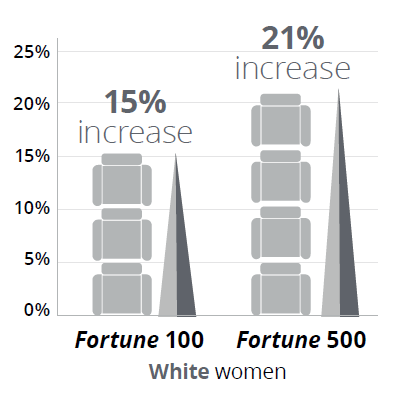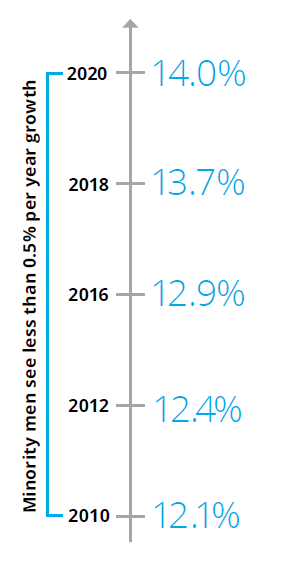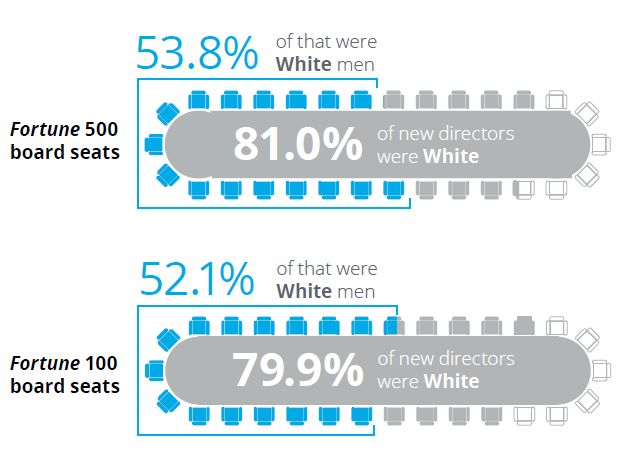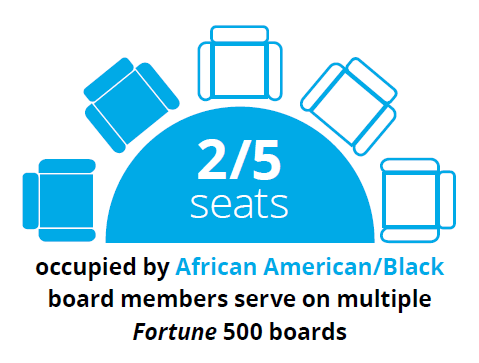Carey Oven is national managing partner at the Center for Board Effectiveness and chief talent officer of Deloitte Risk & Financial Advisory and Deloitte & Touche LLP; and Linda Akutagawa is president and CEO of the Leadership Education for Asian Pacifics (LEAP). This post is based on a Deloitte memorandum by Ms. Oven, Ms. Akutagawa, Lorraine Hariton, Michael C. Hyter, Dale Jones, Cid Wilson, and Caroline Schoenecker. Related research from the Program on Corporate Governance includes Politics and Gender in the Executive Suite by Alma Cohen, Moshe Hazan, and David Weiss (discussed on the Forum here).
While stakeholders and shareholders increase demands for gender, racial, and ethnic diversity in the boardrooms of America’s companies, many forward-thinking boards recognize the benefits of such change. This business case for board diversity is not new and may no longer be forward-thinking. The protests over racial injustices and state legislative action on board composition in 2020 made clear that the need for greater representation of women and minorities in the boardrooms of America’s largest companies can no longer be held up or held back. As demographics and buying power [1] in the United States become increasingly more diverse, corporate boards are working to obtain greater diversity of background, experience, and thought in the boardroom.
Since 2004, the Alliance for Board Diversity (ABD or “we”) has had a mission to increase the representation of women and minorities on corporate boards and amplify the need for diverse board composition. During this time, ABD has celebrated the movement forward on diverse board representation, but the fact remains that progress has been painfully slow. In 2019, Catalyst estimated that minority women are more than 20% of the US adult population (“Women of Color in the United States: Quick Take,” February 1, 2021, Catalyst). To reach a point of 20% of Fortune 100 seats held by minority women would take until 2046 at the current rate of change.
This study is the culmination of a multiyear effort organized by the Alliance for Board Diversity, collaborating with Deloitte for the 2016, 2018, and 2020 censuses, which have examined and chronicled the representation of women and minorities on public company boards of directors across America’s largest companies. Originally organized as a “snapshot” of board diversity, the data accumulated since 2004 has enabled the ABD to report on trends regarding the overall diversity of boards, as well as the relative differences across the equitable rates of representation for women and minorities by gender, race, and ethnicity. This Missing Pieces Report, 6th edition highlights the progress to date that has or has not been made in the equitable representation of women and minorities on corporate boards. While there have been a few gains in board representation for some demographic groups, advancement is still very incremental, with goals of achieving proportional representation to the presence of women and minorities in the US population sometimes multiple decades away at current rates of change. [2]
Key findings
Reviewing the data provides us with insight into board diversity changes from 2018 to 2020 across the Fortune 500. For this edition of the Missing Pieces report, public filings were reviewed up until June 30, 2020, for a year-over-year comparison. It should be noted that the companies included in the Fortune 100 and 500 change over time. A few specific summary items to note:

The 2020 analysis of public filings shows 200 companies with greater than 40% diversity, an initial percentage goal set by the ABD in 2004. This is nearly four times the number of companies a decade ago.
Six companies remain composed entirely of White male board members. Five of these six companies’ boards have been comprised of entirely White males since 2016, when Deloitte began collaborating with the ABD on the Missing Pieces report. In 2016, there were 15 boards with zero gender, racial, or ethnicity diversity. The ABD and Deloitte acknowledge that the progress made on overall diversity has largely been due to the increase of White women on boards.
In 2020, nearly 36% (more than one-third) of diverse board seats are occupied by persons on multiple Fortune 500 boards. Clearly, the opportunities need to be spread more widely among eligible women and minority board candidates. In fact, we may be underestimating the “overreliance” on these board members, as we are not accounting for their board seats outside the Fortune 500.
White women made the largest percentage increase in board seats gained in both the Fortune 100 and Fortune 500, larger than any other group or gender, a gain of 34 seats (15%) in the Fortune 100 and 209 seats (21%) in the Fortune 500.

Minority men show no substantive increase in their rate of representation in either the Fortune 100 (see left) or 500, which is concerning, as their rate of representation in the Fortune 500 has been growing at less than 0.5% per year since 2010. In fact, African American/Black men lost one seat in the Fortune 100 and five seats in the Fortune 500.

Across the board, women and minorities have made more progress in board representation for the Fortune 500 between 2016 and 2020 than between 2010 and 2016. This increased rate of change, while encouraging, still requires, in some cases, decades more for the achievement of equitable gender and minority board representation.
In the Fortune 500, 974 board seats were filled by directors new to Fortune 500 boards, those not present on boards in the 2018 census. [3] Of those 974 board seats, 81% were filled by White directors, with 53.8% filled by White men. Of the directors new to the Fortune 100, 79.9% of board seats were filled by White directors, with 52.1% filled by White men, an increase from 51.1% in the last edition of the census (2018).

Based on analysis of the raw data from ISS Corporate Solutions on the skills and experience of board members holding Fortune 500 board seats, women and minority board members currently are more likely than White men to bring experience with corporate sustainability and socially responsible investing, government, sales and marketing, and technology in the workplace to their boards. These skills are on the forefront of growth in a post pandemic economy and less than 55% of board members in the Fortune 500 report having any one of these skills. There are possible layers of questions here: Are these untapped skills that women and minorities exemplify? Do women and minorities have these skills more than their White male counterparts? One ABD concern is a possible overreliance on women and minorities to provide those skills, pigeonholing others to think to look only to women and minorities if they need specific experience (e.g., sales and marketing).
Overall, this year’s census provides powerful metrics on the very gradual progress in diversity of America’s boardrooms.
After further analysis of the data from 2016, 2018, and 2020, the impact of placing women and minorities into the positions of board chair and nominating or governance chair can pay immediate and future dividends for the promotion of board diversity. When they have a woman or minority as their nominating or governance chair, boards are not immediately more likely to have higher percentages of women or minorities. After two years, these boards are more likely to have higher percentages of women or minorities.
While women and minorities have consistently held higher recycle rates than White males in the Fortune 500, this rate has generally decreased each year for all demographic groups, including White males (see the complete publication for details). In 2020, nearly 36% (more than one-third) of diverse board seats were occupied by persons on multiple Fortune 500 boards. The concentration is most acute for seats held by African American/Black members. Just over two out of every five seats occupied by African American/Black board members were held by a person serving on multiple Fortune 500 boards. The concentration is least acute for Asian/Pacific Islanders, with about a quarter of all seats occupied by Asian/Pacific Islanders being held by a person on multiple Fortune 500 boards.
Overall, this year’s census provides powerful metrics on the very gradual progress in diversity of America’s boardrooms and may help to guide corporations toward improvements in accelerating board participation of women and minorities. The Alliance for Board Diversity would like to see higher percentages for minority participants (currently only 17.5%) as we work toward the goal of 40% women and minorities holding Fortune 500 board seats.


The complete publication, including footnotes, is available here.
Endnotes
1The Selig Center estimates that the nation’s Black buying power will rise to $1.54 trillion by 2022 (a five-year estimated growth of 21%, versus 18% for non-Hispanic whites), driven by inspirational gains in population, income, and education. See The Nielsen Company (US), Inc., “From Consumers to Creators: The Digital Lives of Black Consumers,” 2018.(go back)
2United States Census Bureau, “Annual estimates of the resident population by sex, race, and Hispanic origin [Data set],” 2020; “2019 Population Estimates by Age, Sex, Race, and Hispanic Origin.”(go back)
3This number contains both directors who are new to board service and any board member on a board who was not in the Fortune 500 in 2018, the date of the last census.(go back)
 Print
Print
One Comment
The non-intention is real among F500 companies wanting to retain control of leadership and power with the simple fact that more than 79 percent of director replacements are white Americans. Systemic racism is live and well among our corporate directors.